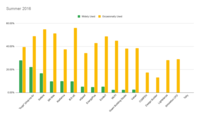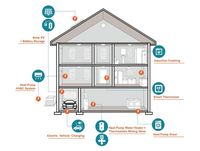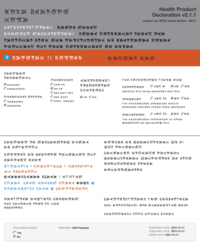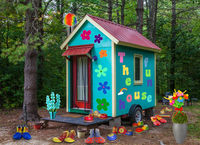Op-Ed
Fifty years out, the increased awareness of the environment is heartwarming and the accomplishments significant, but our challenges are greater than ever.
Fifty years ago, I was the Earth Day Coordinator at Radnor Junior High School in Wayne, Pennsylvania. At age 14, I was a budding conservationist (we weren’t really using the term “environmentalist” yet), and I remember taking the train into Philadelphia to pick up mimeographed flyers about Earth Day to hand out in our school... Read more
Op-Ed
What lessons can we learn from the coronavirus pandemic that will help us end up in a better place when the crisis is over?
In a time of an unrelenting onslaught of devastating news from the COVID-19 pandemic, it’s hard to imagine that we will get to the other side of this mounting humanitarian and economic catastrophe. And it’s even harder to imagine that there could be good news that will emerge from it. But there may be some silver linings in... Read more
Feature
The process of finding and managing product information for LEED has changed—and v4.1 has added even more to think about.
Remember 2013? LEED version 4 had just been released to the public. Hardly anyone was using it, though—not only because they didn’t have to, but also because there just wasn’t a pathway to achieve many of the new credits in the rating systems. Especially the product-related credits in the Materials & Resources category, along with the Low-... Read more
News Brief
A new standard lays out design guidance for maximizing a building’s adaptability and disassembly potential.
Making material and design choices that minimize a building’s embodied carbon upfront is vital. But a new standard from the International Organization for Standardization (ISO) reminds us that we can also reduce embodied impacts by extending the useful life of what we plan to build.
ISO 20887: 2020, Sustainability in Buildings and Civil... Read more
News Analysis
Microgrids installed in Puerto Rico after Hurricane Maria kept power on in ten schools, but doubts about structural integrity stopped class anyway.
Ten microgrid systems installed in schools in Puerto Rico were put to the test recently after a 6.4 magnitude earthquake caused massive power outages. The systems survived and successfully powered critical loads in each school, according to Rocky Mountain Institute, which championed the installations along with Save the Children and the Kinesis... Read more
News Analysis
Use of whole-building life-cycle assessment tools like Tally is spiking. Why?
Interest in the embodied carbon of buildings—the upfront carbon emissions associated with production of building materials—has seen a major spike in the last couple of years, which has led to increased interest in whole-building life-cycle assessment, or WBLCA. WBLCA measures the environmental impacts, including global warming impacts, of a... Read more
News Brief
Under a new EPA ruling, large commercial HVAC and refrigeration systems will no longer have to address high-GWP refrigerant leaks.
The U.S. Environmental Protection Agency (EPA) has rescinded the leak-repair provisions that were put in place in 2016 by the Obama administration as part of Section 608 of the Clean Air Act. Section 608 regulates the use of high-ozone-depletion-potential (ODP) refrigerants in HVAC and refrigeration equipment. The Obama administration amended... Read more
News Analysis
Three organizations focused on building electrification share their message for the AEC industry.
Advocacy groups have been popping up, urging people to use more electricity, not less. It’s sometimes a confusing message for people to hear.
Building electrification refers to using electric technologies instead of combustion-fueled technologies to supply the comforts of... Read more
April Fools
Stickers, cardboard cutouts, and a Revit plug-in aim to help project teams keep carbon in the forefront.
On the heels of the announcement that teen climate-change activist Greta Thunberg will have her own BBC television show, the U.S. Green Building Council (USGBC) is introducing Thunberg-related merchandise that will be required for achieving certain credits in the LEED rating systems. The so-called Greta Merch includes stickers... Read more
April Fools
Vinyl’s quality and long-term performance shouldn’t be underestimated.
Vinyl has a complicated history. It seems as though vinyl has been around forever, but it wasn’t until the ’60s and ’70s that its perceived warmth, quality, and affordability made it ubiquitous in U.S. homes. Vinyl often brought artistry and vibrancy to lives seemingly stuck in a 1950s black-and-white world. But like beads,... Read more
April Fools
Gwyneth Paltrow’s offering to the sustainability world rewards projects for venerating the “cradle of civilization.”
Citing an overlooked niche in the array of building certifications, actress and lifestyle guru Gwyneth Paltrow announced the Goop Building Standard. Known also as GOOP, the new standard provides a framework for healthy living.
Although GOOP stands for Gyno-Ovarian Occupant Priorities, Paltrow denies... Read more
April Fools
The feds have announced the first projects completed under proposed new guidelines.
The U.S. General Services Administration (GSA) has unveiled the first five projects completed under its new Classical Architecture Standards. Developed by GSA in response to an anticipated executive order from President Trump, these guidelines could eventually apply to all new federal buildings as well as major retrofits.... Read more
April Fools
Manufacturers claim non-English HPDs promote transparency, but critics cry foul.
Acme Resilient Flooring thought it had scored a home run with the release of a LEED v4.1-compliant Health Product Declaration (HPD) v2.1.1 for its tire-derived recycled rubber floor tiles. They hoped the HPD, written entirely in Hittite cuneiform, would not only drive international sales but also revive interest in ancient... Read more
April Fools
Clowns in tiny house communities are finding challenges, and solutions, in the age of social distancing.
In 2017, BuildingGreen reported on the community of clowns who had settled in a tiny house cohousing complex in Portland, Oregon. They quickly became indispensable members of the community, modeling humor, tolerance, acceptance, and the ability to optimize resource and energy efficiency by cramming seemingly impossible numbers of... Read more
Webcast
There is increasing consensus that getting toxic fuels out of buildings by switching to all-electric technologies is essential to reducing greenhouse gas emissions, but making that change isn’t easy. Watch this webinar to hear from two leaders in the field, one a policy expert and the other an engineer and consultant creating leading-edge... Read more
Blog Post
A letter that BuildingGreen President Nadav Malin sent to our community on March 16, 2020
To our friends and colleagues in the green building world,
We are now, in the most challenging sense, living in interesting times. As of today very few of us in North America are suffering from the illness caused by COVID-19, but we’re all experiencing its secondary effects: efforts to contain it that are shutting down gatherings,... Read more
News Brief
Students with cleaner indoor air significantly out-performed their peers in a recent study.
The cognitive effects of outdoor air pollution can be devastating, particularly for schoolchildren. A new working paper suggests that there may be an inexpensive correction for this—cleaning up indoor air using air filters.
The study took advantage of the political fallout from a 2015–16 gas leak in California. Residents demanded... Read more
News Analysis
By focusing attention on social equity, Just helps turn values into actions, say those who’ve attained the label.
Transparency incites change—or so we’ve been led to believe. But is it really true?
The Just label is a good test case. A transparency program for social justice within companies, the label was introduced by the International Living Future Institute (ILFI) in 2013. More than six years and nearly a hundred companies later, we are... Read more
Product Review
The LG Hydro Kit, now sized for residential and multi-family use, captures waste heat from its Multi V heat pumps to provide a fossil-fuel-free source of hot and cold water for space heating or domestic hot water.
Air-to-air variable refrigerant flow (VRF) heat-pump systems use refrigerant to move energy throughout buildings and are extremely efficient, but the heat that is removed from the interior during cooling is often just released outdoors. What if we captured that waste heat to provide domestic hot water or additional space heating?
... Read more
News Brief
Touting the benefits of biobased materials and electrification, a recent study shows how low-rise buildings can become a climate solution.
Embodied carbon represents an outsized portion of greenhouse gas emissions from new low-rise construction, according to a white paper released by Builders for Climate Action. But it’s also possible to reduce that footprint with conventional materials—and even to make buildings a carbon sink by using less common products—according to the report... Read more









